|
The monthly mean seeing at Paranal measured at 6 meter above ground and corrected for
zenith and a wavelength of 0.5 micron.
| 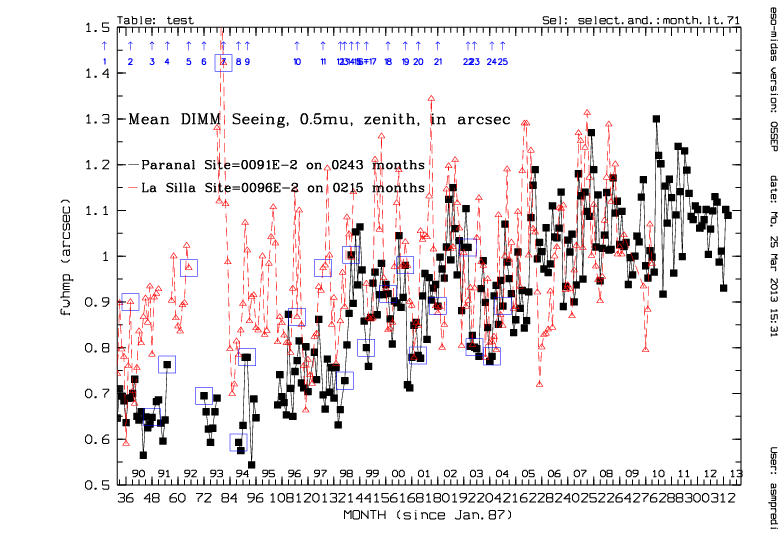
|
|
The current VLT-ASM DIMM started operation on month 137. During the months 126-135,
the portable monitor in use could only work in low wind conditions, the data have
been increased by 15% to account for that effect.
|
During the end of 1998,
the unusual conditions of bad seeing which prevailed during
UT1 science verification
still occurred at Paranal with a frequency higher than in the past. We have identified
that this new feature was strongly correlated with a given wind pattern. Microthermal measurements
on a 30m high mast have shown (A&A SS 144, 39-44, May 2000) that this additional turbulence
was not limited to the first few tens of meter above ground which accounted for less than 10%
of the total seeing. Moreover, due to finite outer scale effects,
the 8m VLT Unit Telescopes suffer a (10% in V, more in the IR) smaller
degradation than what the ASM-DIMM is predicting.
However the new wind pattern (NNE to
ENE) occurs at the expense of the standard Paranal WNW to NNW wind. As a
consequence the very good seeing
(smaller than 0.5 arcsec) is less frequent than normal (only 3% of the time in the
period OCT-DEC 98 against 30% at the same period in 1997).
|
|
The good seeing wind rose: for each wind direction, the percentage of the
time when a given direction was coincident with seeing better than 0.5 arcsec
| 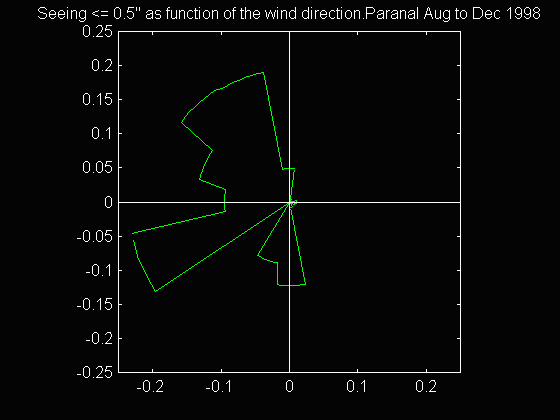
|
|
The bad seeing wind rose: for each wind direction, the percentage of the
time when a given direction was coincident with seeing worse than 1.5 arcsec
| 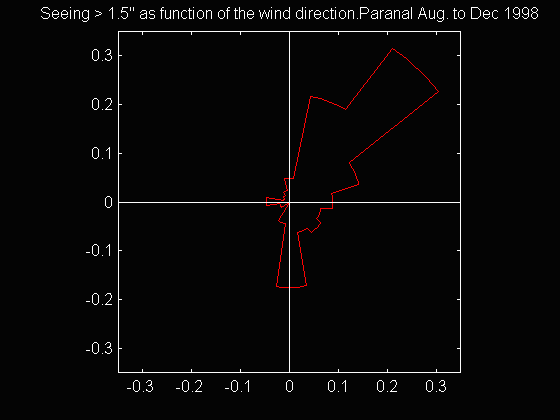
|
|
The fraction of nighttime when the wind blows from the good seeing direction since the end of
levelling of Paranal
| 
|
|
The fraction of nighttime when the wind blows from the good seeing direction since the
beginning of the Paranal site survey
| 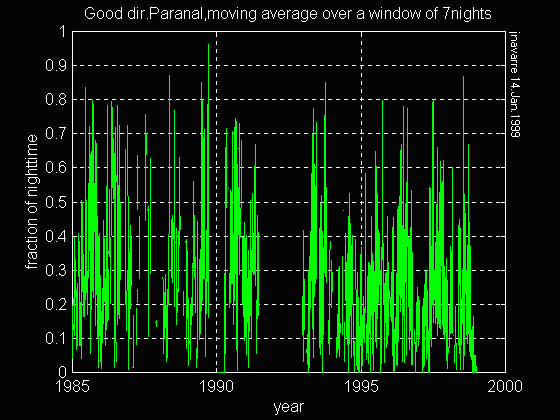
|
|
The fraction of nighttime when the wind blows from the bad seeing direction since the end of
levelling of Paranal
| 
|
|
The fraction of nighttime when the wind blows from the bad seeing direction since the
beginning of the Paranal site survey
| 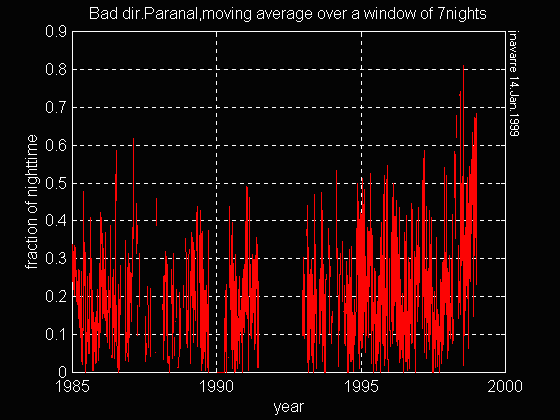
|
|
Histogram of the temperature difference between 30m and 2m height during bad seeing
conditions
| 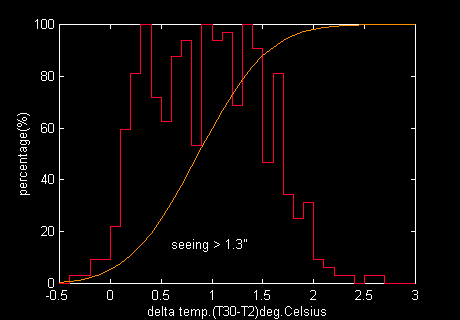
|
|
The bad seeing is located in the lowest layers down to the surface: it is well correlated
with a large vertical gradient of the air temperature in the first 30m above ground
|
|
Histogram of the temperature difference between 30m and 2m height during good seeing
conditions
| 
|
|
The good seeing is characterized by an abscence of turbulence in the surface
layer. The vertical gradient of the air temperature in the first 30m above ground is
close to zero.
|
|
The wind flow (RISOE study, 1990) at 10m above ground in the Paranal area for an upwind undisturbed
direction of 330 degree corresponding to the good seeing situation.
| 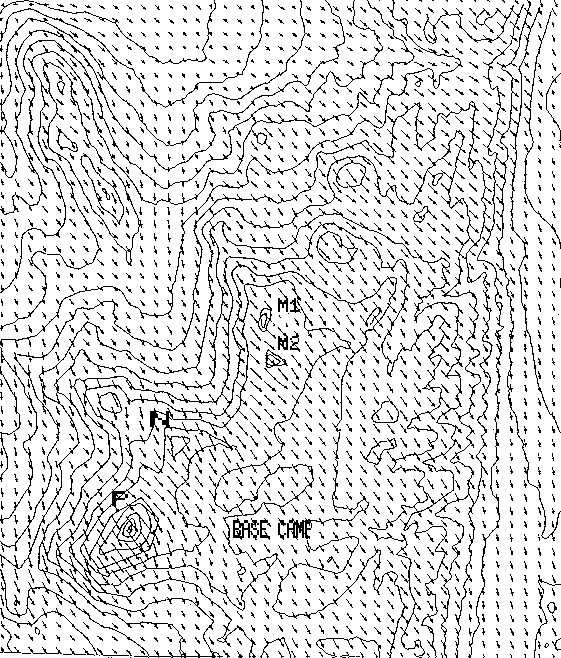
|
|
In the standard good seeing situation, the flow above Paranal comes from the very
steep coastal slopes. The turbulent flow from the large
valley North of Paranal is forced to two passes between Montura (M1,M2),
NTT (N) and Paranal peaks (the later is visible on the photo below).
|
 (Photo obtained on
December 12, 1998-IPS).
(Photo obtained on
December 12, 1998-IPS).
![[ ESO ]](/images/eso-logo.gif)
![[ ESO ]](/images/eso-logo.gif)










